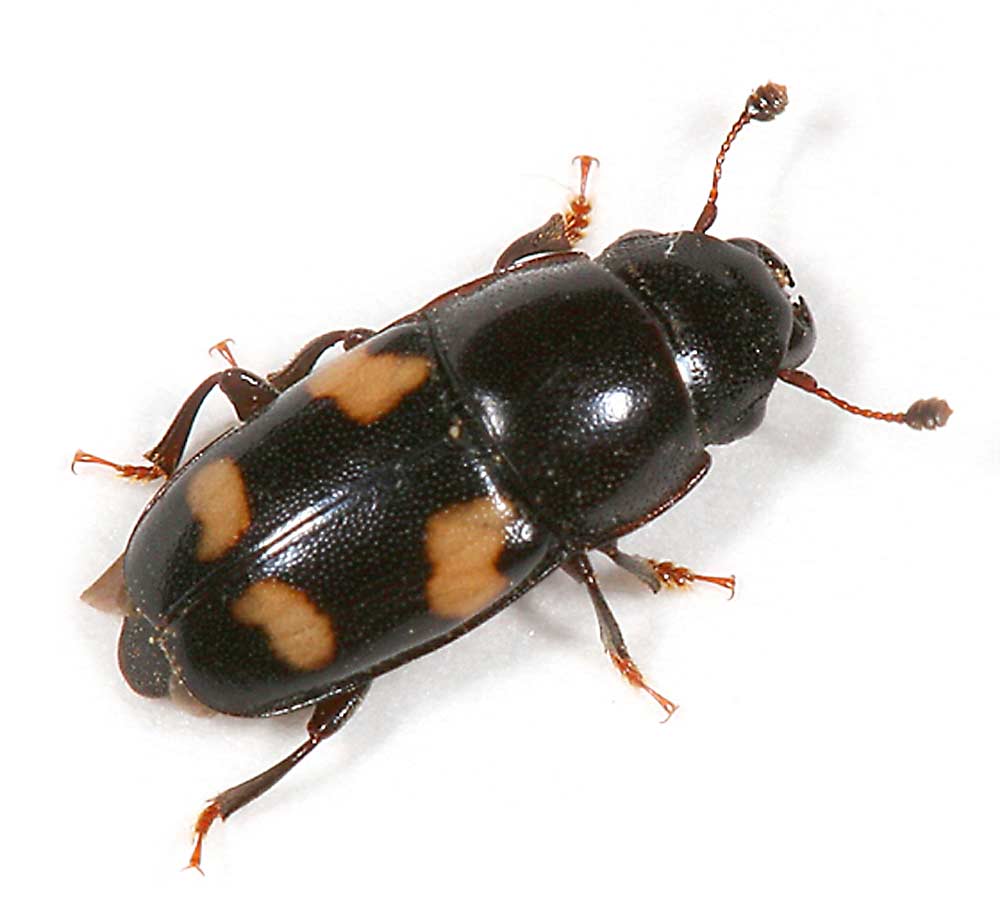
Sap beetles are typically secondary pests of sweet and tart cherries in Northwest Michigan, but populations seem to build up to commercially damaging levels following seasons in which lots of unsold fruit is left around to rot. Those ideal conditions for the pest were reached in 2010 and again in 2019, when processors started rejecting fruit.
“We usually don’t have issues with sap beetle,” said Nikki Rothwell, coordinator of Michigan State University’s Northwest Michigan Horticulture Research Center. “It’s not something we spray for regularly.”
Processors started calling the research center during the 2019 harvest, saying they were finding larvae in their cherries. At first, Rothwell assumed it was spotted wing drosophila (SWD), but when her team looked closer they discovered it was the much larger larvae of the sap beetle, she said during the 2020 Northwest Michigan Orchard and Vineyard Show near Traverse City in January.
In response to this unexpected infestation, the MSU researchers decided to take a more detailed look at sap beetle characteristics. Their findings are still preliminary, but Rothwell said beetle populations, attracted to cracked and rotting fruit, likely are driven by cherries left on trees and on the ground. And because of SWD infestation, growers dumped more cherries on the ground in 2018, which might explain the greater sap beetle problem the following year.
SWD is doing more and more damage to cherries in Northwest Michigan, leaving more and more fruit to rot. Because of this, Rothwell is concerned that sap beetle populations might build up over time. She said more data is needed on the relationship she hypothesized between SWD and sap beetle.
Beetle background

Michigan has two main species of sap beetle: the picnic beetle (Glischrochilus quadrisignatus), about a quarter of an inch long; and the strawberry sap beetle (Stelidota geminata), an eighth of an inch long. Both species have little knobs on the ends of their antennae and both have been found in Northwest Michigan cherries, Rothwell said.
The larvae have six legs and are much larger than SWD larvae. They also have straight bodies and a distinct head capsule, she said.
Sap beetle is a more common pest in other crops, including sweet corn and raspberries, but especially strawberries. The beetles frequently fly into fields from wooded areas nearby. Attracted to rotting fruit, they usually show up after picking, when berries are left on the ground. Both adults and larvae feed on fruit, doing two types of damage — from direct feeding, which leaves a distinctive hole in a rotting berry; and indirectly by spreading rot pathogens, Rothwell said.
MSU recommends strawberry growers immediately remove damaged, diseased and overripe fruit from the field, or at least cover it, to keep beetles out. As for insecticides, Brigade (bifenthrin), Danitol (fenpropathrin), and Assail (acetamiprid) can provide some control in strawberries, but it’s not guaranteed. Their efficacy has not yet been tested in cherries, she said.
More data needed
When sap beetle hit Northwest Michigan cherries hard in 2010, Rothwell hypothesized that the problem originated with the large crop of 2009. Huge piles of cherries were dumped on the ground that year, as a result of marketing diversions. All that rotting fruit attracted sap beetles. Populations built up, and by the next year, large numbers of beetles were attacking cherries. The problem then subsided until 2019.
Seeking to avoid another surprise, the research team at the northwest center is now trying to understand what exactly predisposes cherries to sap beetle infestation. They investigated the influence of both SWD and American brown rot, she said.
To better understand the beetle’s cherry preferences, the researchers set up “choice-test arenas” with four different types of fruit: clean/intact, damaged (wind whipped or bruised), infested with SWD, and infested with American brown rot. Sweet and tart cherries were tested separately.
The team collected sap beetles from an infested strawberry field at a nearby farm and added an average of eight beetles to each arena. They gave the beetles 24 hours to choose their preferred fruit, then put each pile of fruit in a freezer. After thawing, they counted the number of sap beetles under each pile.
In Montmorency tart cherries, they found that most beetles preferred the fruit that was infested with brown rot. In sweet cherries, however, most beetles preferred the dark fruit infested with SWD. Rothwell said there might be relationships there, but results are preliminary and more data is needed. •
—by Matt Milkovich






Leave A Comment